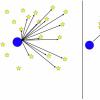As you like the bar chart then you will see a NAM AUC of 6k versus a NAD+ AUC of 16k.Dont know how you read the charts but the leganda's are not the same. But I agree that the NAM supplementation shows a similar picture.
I am comparing the black bar with the green bar within a single plot in every case. In the case of NAD+ (the Fig. 5b bar chart), there is no significant overall difference between the NR and NAM mice. In the case of NAM (the Fig. 5d bar chart), it needs to be explained how NR produced a significantly higher rise in NAM than NAM did. That is extraordinary since the researchers also claim that NR is absorbed intact.
The researchers never said how much NAM they gave the mice in mg/kg. They only said--
We therefore designed a reverse translational experiment in which mice were administered 185 mg kg−1 of NR or the mole equivalent doses of Nam and NA by oral gavage.
The molar weight of NR is 255 and the molar weight of NAM is 122, so it appears that they gave mice slightly more than twice as much NR by weight than NAM, then claimed that NR was twice as good based on one of seven data points in time plot of Fig. 5b, even though the overall rise of NAD+ (shown in the bar chart of the same figure) was about the same while the rise of NAM with NR was a good deal higher. If they had spelled that out in their paper, people would be taking NAM, not NR.
I am comparing the AUC bars in 5b versus 5d, they give the corresponding NAD+ and NAM rises as result of the NR and NAM gavage respectively. Like said, agree they dont solve the question.
Noted your comment on molar weight approach. I think the authors took a good approach. But it doesnt really matter. I think the interesting part is:
"Of the metabolites associated with NAD+-consuming activities, ADPR is the only one that must be formed from NAD+ because Nam, MeNam and the oxidized forms of MeNam could appear in liver from the gavaged Nam without conversion to NAD+"
So there is proof that the oral gavage with NR leads to higher NAD+ consumption but in the NAM gavage case there is no conclusive proof as the metabolic indicators that spike could be generated via other pathways. That doesnt mean NAM gavage doesnt cause increased NAD+ consumption but it points out a clear difference between the two and gives NR an extra proof point over NAM.
Also I want to repeat that the graphs show the momentary level of NAD+ which is the outcome of NAD+ creation rate minus NAD+ consumption rate. So just comparing peak levels doesnt tell the story.
But okay I promised to stay away here as people in this thread are able to asses their NAD+ consumption based on feelings, no need for this discussion. So have a great weekend all.
Edited by stefan_001, 23 September 2017 - 08:45 AM.































 This topic is locked
This topic is locked


























